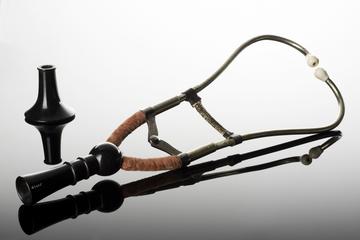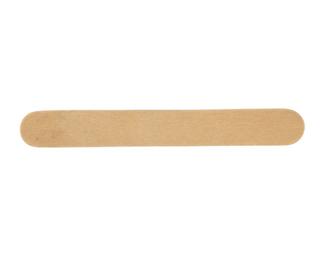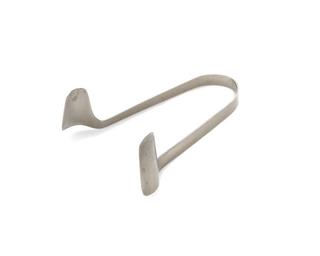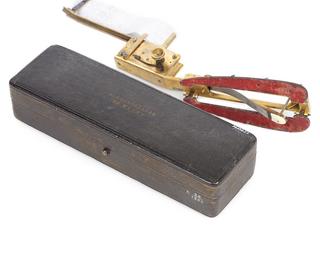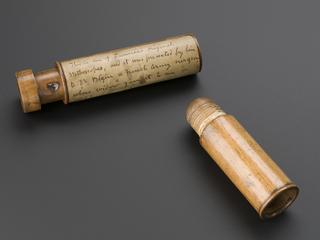
Lowne portable spirometer, London, England, 1880-1890
- maker:
- Arnold and Sons

Lowne portable spirometer, by Arnold, 1880-1990, English
Spirometers were developed in England in the 1840s. They measured the ‘vital capacity’ of the lungs. This means the largest amount of air they can hold, which can indicate the health of the respiratory system. They also indicated improvement or deterioration in conditions such as tuberculosis. This portable spirometer is made of brass, rubber and glass in a mahogany case. It was made by Arnold and Sons of London.
The patient’s breath bubbled up a water-filled collecting glass and pushed up a sliding weight. A scale on the attached spirometer indicated the capacity of the lungs. Scientific instrument maker, Robert Mann Lowne (1844-1929) patented this portable spirometer in 1865.
Details
- Category:
- Clinical Diagnosis
- Collection:
- Sir Henry Wellcome's Museum Collection
- Object Number:
- A600384
- Materials:
- brass, black finish, case, mahogany, tubing, rubber, tubing, fabric and tubing, glass, nozzle
- Measurements:
-
overall: 105 mm x 150 mm x 100 mm,
- type:
- spirometer
- credit:
- Pill, A.L.
